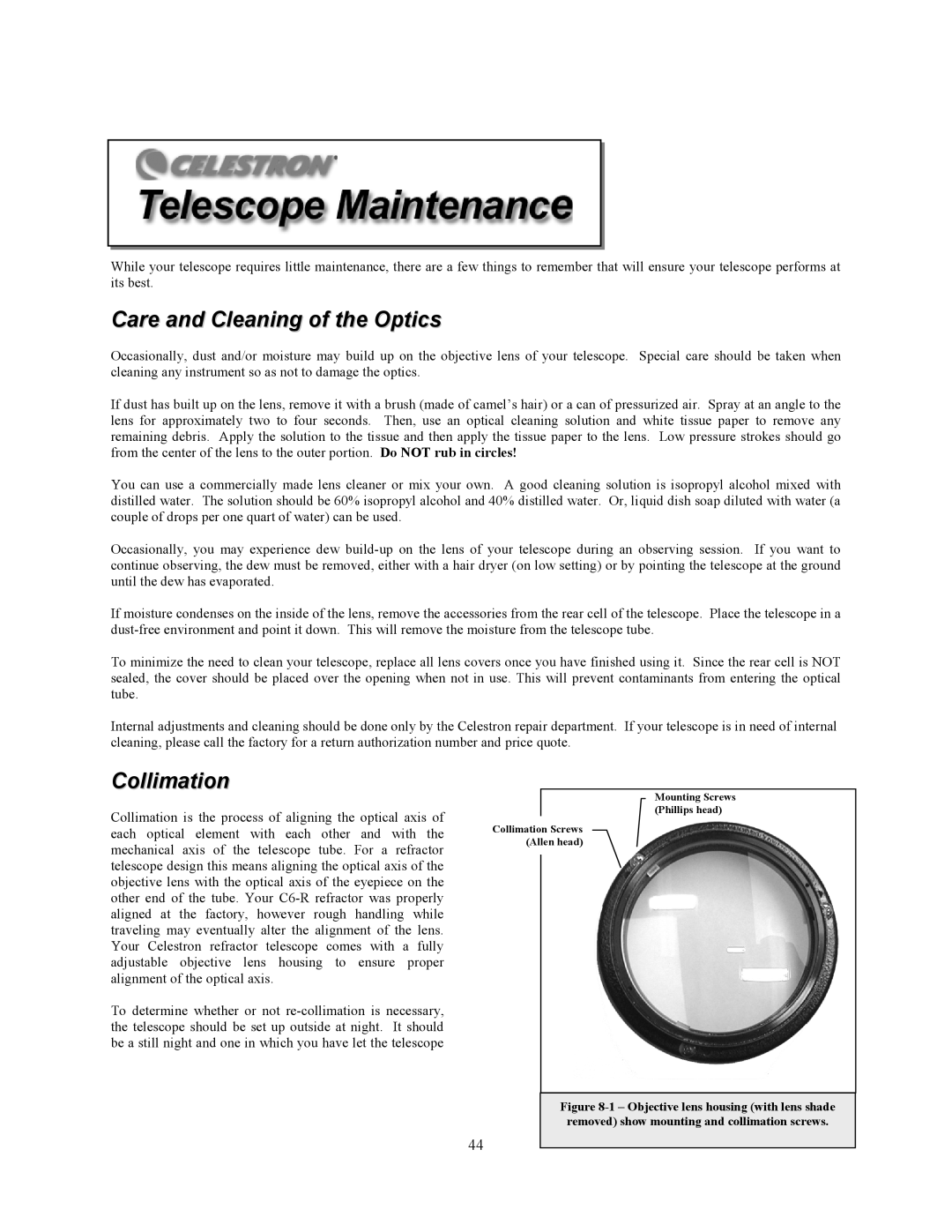Advanced Series GT, C6-R, C6-RGT specifications
The Celestron C6-RGT and C6-R models, part of the Advanced Series GT lineup, are popular choices for amateur astronomers seeking high-quality optics and reliable features. The C6-RGT, equipped with a 6-inch refractor, is designed for both visual and astrophotographic pursuits. Its impressive features make it a great option for anyone looking to explore the night sky in greater detail.One of the standout characteristics of the C6-RGT is its large 6-inch aperture, which allows for exceptional light-gathering capability. This feature is crucial for viewing faint celestial objects, giving users the ability to observe details in nebulae, galaxies, and star clusters. The refractor design minimizes chromatic aberration, ensuring sharp and clear images across a wide range of viewing conditions.
The telescope comes with a fully multi-coated optics system that enhances light transmission and contrast, creating brighter and clearer images. The C6-R is also designed with a robust aluminum tube that not only ensures durability but also helps maintain stability during long observing sessions.
The Advanced Series GT mount is another essential element of the C6-RGT and C6-R models. This computerized mount features a sturdy, stable design that supports a wide range of telescopes while providing smooth tracking of celestial objects. The GoTo technology allows users to locate and track over 40,000 celestial objects with ease. This high level of automation is particularly helpful for beginners who may be unfamiliar with the night sky.
Another notable feature of the Advanced Series GT is its ability to be controlled through a smartphone or tablet, thanks to Celestron's SkyPortal app. This integration opens doors for enhanced stargazing experiences, offering customizable tours and educational information right at your fingertips.
In terms of usability, both models have a comfortable height and the mount can be easily adjusted to accommodate various observing positions. The telescope is also portable, making it convenient for outreach events or trips to dark-sky locations.
Overall, the Celestron C6-RGT and C6-R models, with their combination of powerful optics, advanced technology, and user-friendly features, represent an excellent choice for both budding astronomers and passionate enthusiasts. With Celestron’s commitment to quality and innovation, these telescopes promise to deliver unforgettable views of the wonders of the universe.

